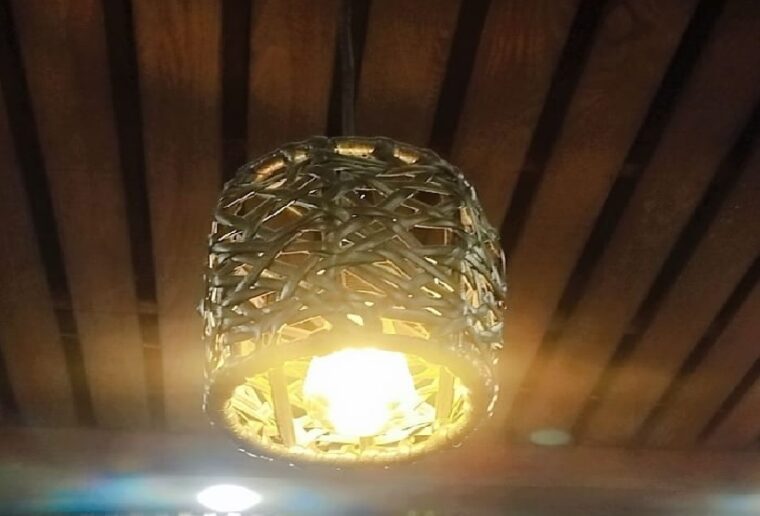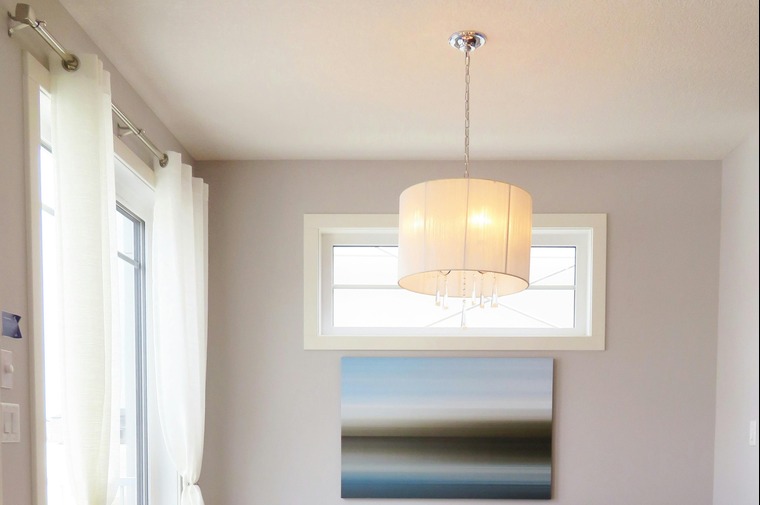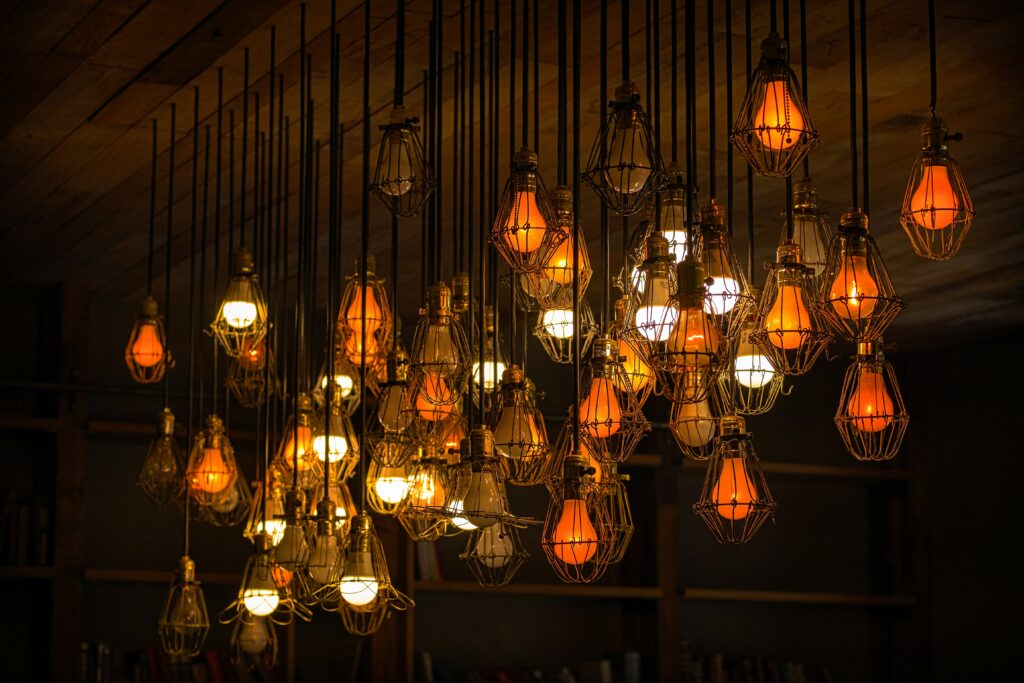Lights are getting smarter these days. They’re not just for making things bright anymore. Now, we can control them easily, save energy, and make rooms feel different. People use these smart lights at home, at work, and even in whole cities. As time goes on, we’ll be able to do even more cool things with lights. They might help us save more power, change to fit what we like, and make cities work better.
Current State of Smart Lighting
Smart lighting systems currently offer a range of features, including:
Wireless Connectivity:
Smart lighting control has reached a new level of convenience, allowing users to manage their lighting systems remotely through smartphones, voice assistants, or tablets. This capability includes turning lights on or off, adjusting brightness, and even changing colors, all from a distance.
Energy Efficiency:
Maximize energy efficiency by employing automated scheduling to control lighting patterns, utilizing occupancy sensors to ensure lights are only active when spaces are in use, and incorporating adaptive brightness to adjust light levels according to natural daylight. These strategies work in tandem to reduce energy waste, lower utility costs, and enhance overall sustainability.
Color Temperature Control:
Tailor the color temperatures of your lighting to match specific tasks, enhance various moods, or create the desired ambiance. Warmer tones can foster a cozy, relaxed atmosphere, while cooler tones boost concentration and productivity. This customization ensures optimal lighting for any situation, transforming spaces to perfectly align with your needs and preferences.”
Scene Setting:
Design unique lighting scenes tailored to a variety of activities, such as creating a calm, focused environment for reading or a dynamic, immersive atmosphere for entertainment. These preset scenes allow you to switch seamlessly between different lighting modes, enhancing both functionality and experience. Such customization not only elevates the ambiance but also adapts effortlessly to your diverse daily needs
Voice Control:
Seamlessly incorporate smart lighting systems with leading voice assistants, such as Alexa and Google Assistant. This integration allows users to control their lighting through simple voice commands, offering an enhanced level of convenience and handsfree operation. Whether you’re dimming the lights for a movie or turning them off before bed, voice control makes managing your home’s lighting effortless and intuitive.
Trends Shaping the Future of Smart Lighting
Integration with IoT
Smart lighting systems now seamlessly connect with various other smart devices, creating a unified and comprehensive automation network. This integration allows for centralized control and synchronization, enhancing the overall efficiency and convenience of managing your smart home
Integration with AI
Utilizing advanced AI technology, smart lighting systems will actively learn and adapt to the unique preferences of occupants, finetuning lighting conditions to suit their needs. Over time, these systems become increasingly intuitive, creating personalized lighting experiences that enhance comfort and efficiency. This level of automation ensures an effortlessly customized environment, responsive to individual habits and routines
Human-Centric Lighting
Emphasizing the profound emotional and biological effects, modern lighting solutions are tailored to enhance wellbeing and productivity. By adjusting to natural rhythms and mood requirements, these systems support both mental health and physical performance
Advanced Sensors and Data Collection
In the future, smart lighting will use advanced sensors to detect things like presence, daylight, temperature, and humidity. These sensors will help optimize energy use and improve comfort. In offices, they’ll also assist managers in cutting costs and creating a better workspace
Voice and Gesture Control
Voice assistants like Alexa, Google Assistant, and Siri have made controlling smart lights super easy. Soon, gesture recognition will take it up a notch. Picture walking into a room and just waving your hand to change the brightness or color
5G Connectivity
The introduction of 5G will be key for smart lighting. With quicker and more stable connections, lighting systems can adjust instantly to their surroundings. This means better integration with other smart devices and easier expansion to bigger buildings and cities
Innovations in Smart Lighting Technologies
Innovations in smart lighting technologies are transforming how we interact with our environments, emphasizing sustainability and user experience. These advancements include AI driven systems that learn user preferences, seamless integration with other smart devices, and adaptive lighting that adjusts to natural light levels.
Li-Fi Technology:
Li-Fi, short for Light Fidelity, uses LED light to send data quickly. This means lights could double as data transmitters, offering an alternative to WiFi. In the future, your lights could not only light up rooms but also provide fast and secure internet, making them great for homes, offices, and public spaces.
Quantum Dot and OLED Technology:
Quantum dots and OLEDs are game changers for smart lighting. Quantum dots provide bright, adjustable light, perfect for people friendly settings. OLEDs are flexible and can be built into walls and ceilings, opening up cool new design options for smart homes and offices
Power over Ethernet (PoE):
Streamlining installation processes and minimizing the need for extensive wiring enhances the ease of setting up smart lighting systems. This approach not only makes the installation more user friendly but also improves the overall reliability and durability of the lighting infrastructure.
Bluetooth Mesh Networking:
Boosting wireless connectivity ensures that smart lighting systems operate seamlessly and expand effortlessly. Enhanced scalability and reliability mean these systems can grow and adapt over time without compromising performance or user experience.
Benefits of Smart Lighting Systems
In our busy lives, smart lights are a great new invention that make things easier and save energy. They are part of smart home tech and do more than regular lights. There are Many Benefits of Smart lights which includes change colors, be controlled by your phone, and even save money on electricity. They make your home more comfortable and efficient
Applications of Future Smart Lighting Systems
Future smart lighting systems can do a lot more than just light up a room. They can save energy by adjusting brightness automatically and even improve your mood by changing colors. In public places like streets and parks, these lights can also make areas safer by turning on only when people are nearby.
Smart Homes:
Having a single system to control all your lights makes life easier and helps save energy. This kind of setup lets you manage lighting with less effort, and it cuts down on electricity use, which saves money
Commercial Buildings
In offices and other workplaces, smart lighting makes it easier to get work done and stay safe by adjusting brightness. It also helps save electricity by using only the needed amount of light. This way, businesses can cut costs while making the work environment better.
Industrial Settings:
Special lights for specific tasks help keep workers safe and make work more efficient in factories. These lights are designed to make sure everyone can see clearly and work better
Public Spaces:
Smart street lights help keep public spaces safer by turning on when people are around. They also make areas more inviting, encouraging people to spend time outside and connect with their community.
Healthcare:
Using special lights in hospitals can help patients recover faster and feel better. These lights are designed to create a calming environment that supports healing and comfort
Challenges of Smart Lighting Systems in Future
Interoperability
One challenge with smart lights is making sure they work well with other devices and systems from different brands. It’s tricky to get everything to sync perfectly for smooth operation
Security:
A big challenge for smart lights is keeping them safe from hackers and preventing data leaks. As these systems connect to the internet, ensuring strong security measures is really important.

Cost:
Smart lighting systems can be more expensive to set up than regular lights. These higher initial costs come from advanced technology and features that traditional lights don’t have.
Standardization:
Creating common rules and guidelines for smart lighting systems is important. It helps different brands’ devices work well together and ensures everything runs smoothly.
User Adoption:
Teaching people how smart lights work and why they’re useful is important. It helps them understand the advantages and makes using these systems easier
Conclusion
Smart lighting has a bright future, with new technologies changing how we use light. As these systems get better, more people will start using them, and different devices will work together more smoothly. We’ll see cool new ways to use smart lights in many areas, making our lives easier and saving energy. Adopting this technology will help create a more sustainable and efficient world
FAQs
Q1. What are the modern lighting technologies?
Solid State Lighting (SSL) is amongst the most energy-efficient and environmentally friendly lighting technology.
Q2. What are the five artificial light?
Artificial sources of light are: Electric bulb, torch, an oil lamp, fluorescent tube, candle
Q3. Can artificial light replace sunlight?
No, Artificial light, cannot replicate the optimal spectrum of sunlight.
Q4. What is lighting lux?
The lux (symbol: lx) is the unit of illuminance, or luminous flux per unit area.











